If you remember my old blog (the previous version of this one) you’ll remember that I would periodically write posts detailing how I got into my current obsession and why I think they’re so great 😂 I should probably repost some of those here for context. For example, I wrote about the band Vulfpeck and their Asian-American guitarist Cory Wong; Stargate SG-1 – a tv show, and a plethora of fictional characters like Adrian Monk, the detective with OCD, and Patrick Jane from The Mentalist who was probably the first fandom topic I wrote about. I would write about how these people/groups/shows helped me grow as an artist or person. And, now I’m surprised, because here I am, writing about a film director.
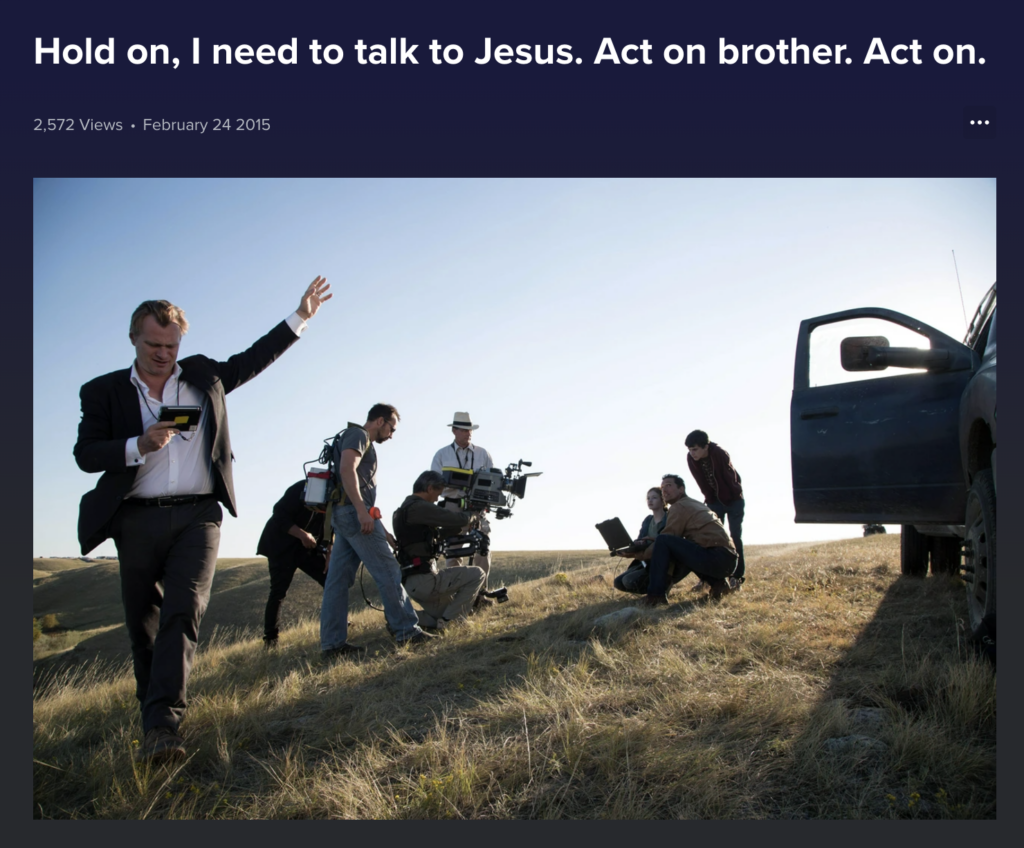
I never expected that 1.) I would be into a film director’s work (bro but isn’t that inevitable for someone in a film school 🙄). I did have a friend from filmmaking class who wrote a blog post on Andre Tarkovsky, but I never saw myself as someone who would do the same… and 2.) I wasn’t counting on it to be Christopher Nolan – I even avoided considering him as my fave director since he’s so mainstream lol. (Though, Interstellar is one of my favourite films and Oppenheimer was a milestone for me as a film watcher since it was the first film I watched alone in a theatre with my own money 🤣 plus, Batman was something my family and I enjoyed at a crucial point of our lives.)
But then I had to watch a documentary on his work for an assignment in Basics of Directing class (it’s part of The Director Series from FilmFrontier and Cameron Beyl) – I’ve been telling people around me that our prof made us watch a 4-hour documentary on him, plus 1+ hour interviews 😂. Our prof chose him because “he started from scratch”. He made his first feature film for $6,000 from his own salary and hired his friends to make it every other weekend for one year.
But what fascinated me is that I started seeing him as someone who could possibly relate to a third culture kid’s experience (though technically he isn’t one), and perhaps that influenced the way he made his films. I didn’t know beforehand that he was a British-American filmmaker – his mom is from Evanston, Illinois, where one of my close friends from college grew up 🤯 (also where the house in Home Alone is 😂) and he and his brother Jonathan would spend summers in, crossing the pond from London. And it’s crazy how he and Jonathan have different accents – Christopher has a British accent and Jonathan has an American accent. What.
Well, imagine growing up in different cultures like that. And one theory I got was connected to how he’s always been obsessed with time, imbuing his films with concepts connected to the manipulation of time, the consequences of time, time as a physical dimension, and so on. I had this idea when I greeted one of my friends in the Philippines for her birthday. I woke up late and messaged her my greeting at about 12PM, and I calculated the time difference and knew she received it at 4PM Philippine time. I thought of how she had just woken up but she had probably already been celebrating her birthday with her friends for a while. I was left behind. Or, it’s like whenever I call my grandmas in the afternoon here and it’s evening their time – I wonder what they had already done for the day.
I guess that experience could make people like Nolan create thought experiments out of the fact how people in different points of the globe experience time differently, how time has passed for people we love but are separated from us through space – then write stories out of that (hello, Murph and Coop 😭).
Studying auteur theory in Language of Film class, I was also interested hearing about the trademarks of Nolan’s works. (Auteur theory is kind of a nebulous topic, but, simply, it’s a type of director who acts as the main author of their film, owning and controlling the vision, and visiting the same themes or including certain elements time and time again. Peter Wollen says there are two schools of auteur critics, “those who insisted on revealing a core of meanings, of thematic motifs, and those who stressed style and mise en scène” – or, the way I interpret this, auteur critics are those who look at “auteur” directors and interpret their works based on what school of thought they belong to. Gah, why am I starting to write a film essay on Nolan in my free time now, without getting any grades 🤦🏻♀️
Well, if we take Wollen’s quote and let me interpret it for Nolan, I’d say Nolan works with those two schools. Some of his thematic motifs are – as I already mentioned, time; then there’s the flawed male protagonist (think the amnesiac Leonard Shelby in Memento; Bruce Wayne; Cobb the dream-meddler in Inception); heightened reality (as he describes it), and the use of math and physics as storytelling tools.
On a side note, the time and heightened reality concepts resonated with me most – I’ll write about time below, but I’ll say this for heightened reality – I think I’m drawn to it because in my art, I like observing daily objects and finding the wonder in everyday walks, the beauty in the mundane (not really in a fantastical sense, but just admiring the light filtered through leaves on a brick wall, the way a passerby is dressed, etc.)… He uses the lens of reality differently though (I’m kinda lazy to find his definition of it, but I hope you’ll think of that term when you see his films)…

Then there’s the second school with has to do with style and mise en scene. Actually, style with Christopher Nolan is more of a motif and belongs to the previous school. He’s a dandy himself lol, always wearing a suit to work on set – even the two Cobbs in Following and Inception reflect that. (Yeah, before DiCaprio’s Cobb existed in Inception, there was a Cobb in Nolan’s first indie film, Following.)
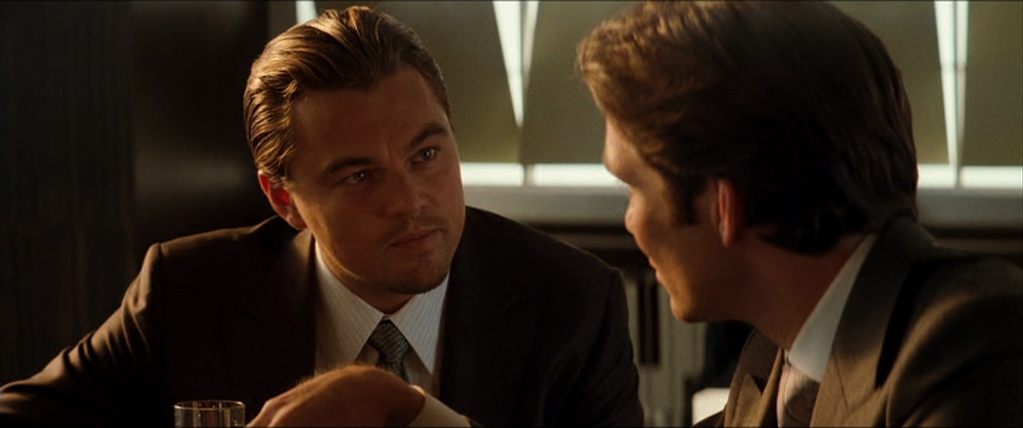
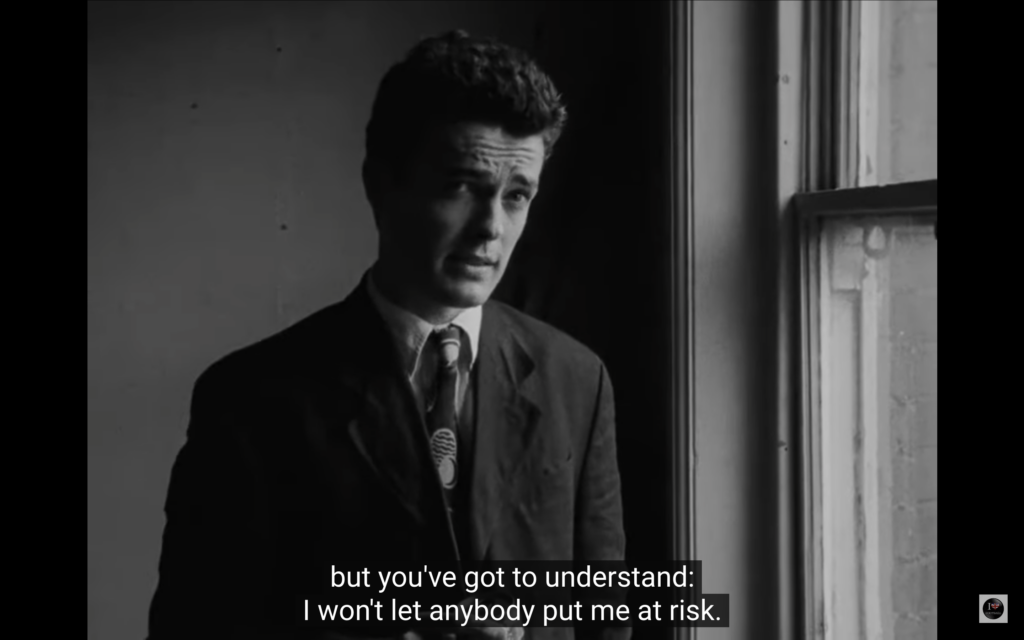
Before I was even aware of Nolan’s sartorial persnicketiness (GAH I have another word in mind but it’s at the tip of my tongue), I remember the character Oppenheimer also had this moment where he became more stylish, wearing his hat in the tiny city they made – it seemed the filmmakers made a whole fuss about him putting on his coat and hat before he went out of his shed. Al Pacino’s character in Insomnia also wore a leather jacket and these black/dark-themed polo shirts and was very stylish. Though, I’m rewatching Interstellar and it seems to be the outlier in Nolan’s penchant for well-dressed protagonists.
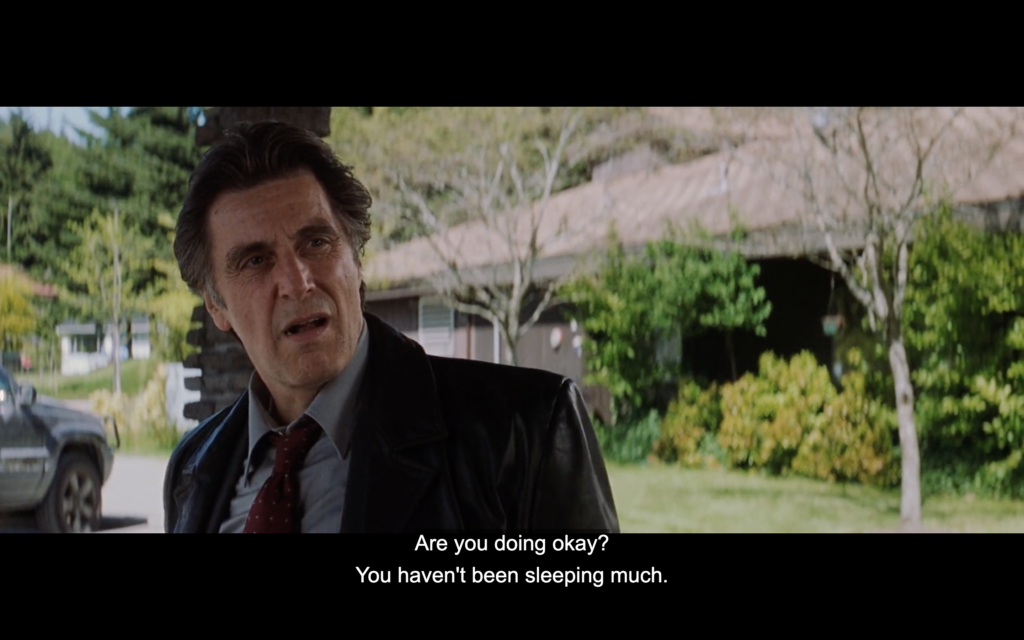
There’s a lot to be said about his style in film, apart from the sartorial style as a motif – his use of cold, steely colours and a muted palette; his famous commitments to practical effects and shooting with film (which he advocated for) – I want to say a complicated plot and sometimes the nonlinear narrative, but that belongs to the former school. Anyway, now that I mentioned nonlinear narrative, let’s move on with that.
I first learned about nonlinear narrative reading a book on scriptwriting by Robert McKee, “Story: Substance, Structure, Style, and the Principles of Screenwriting”. It’s like how the film’s plot jumps back and forth from present, past, and/or future (think Arrival). That fascinated me, and Nolan’s use of it and my “reading” of him as a third culture kid (correction, quasi-third culture kid) helped me realise why I like nonlinear narrative, when many other people are confused by it.
Yeah, I also get confused sometimes, but I think I stick to it because not only is it a mystery I can solve like a detective – with all the puzzle pieces of different times, places and characters – it probably relates to me being a third culture kid who has had to adapt to many cultural differences and situations growing up (like understanding cultural cues in different countries, and deciding how to act in a certain situation depending on the other person’s culture and what city I’m in).
Now, back to Nolan and time. I connected to it once the documentary pointed it out, since personally I’ve been meditating on it in terms of grief and moving on. I saw Inception as one of the ways this year for me to move on from living in Nepal – seven years later. And I am touched by the father’s love in that film and in Interstellar; it helps me understand how my parents watch us kids grow up. (Side note: I’m taken out of the immersion of its story like in Insomnia and Interstellar because I keep thinking of how the films were made, thanks to my Directing homework. But rewatching Interstellar was a better experience because I got immersed in it during the middle part when I watched it with friends.)
It’s interesting how one person can use film to play with time in so many different ways. With his first film, Following, it was about going back and forth in plot and having different puzzle pieces, but it worked for me because I was invested in the main character and his growth. I haven’t seen Memento yet actually, but I know it’s about going backwards in time. Batman digs into Bruce’s past. Insomnia is about disorientation in terms of white nights and time seemingly being stretched out to exhaust the main character. Even Oppenheimer goes a bit back and forth. And of course, Interstellar is about time dilation – I will stop there and not spoil you any further.
Another side note: Cooper said he couldn’t teach Murph about the theory of relativity yet because she was just 10; I remember when I was nine or 10, I played this computer game on one of the science websites Dad sent me: it was about two teddy bears who were twins. One of them stayed on Earth, the other became an astronaut, which I manoeuvred in a different planet, and I had to complete the level and come back to Earth before his brother got too old. I always lost that game and the brother kept on getting older (bruh I forgot if it died, I wish I remembered the name of that game.)
I also theorised that maybe Nolan has time-space synesthesia (being able to see time). Yep, synesthesia isn’t only about people seeing colours when they hear music. There are way more types of it. I thought of this theory when this line came up in the documentary when Interstellar was being dicussed: “…Interstellar posits that time is a spatial dimension onto itself.”
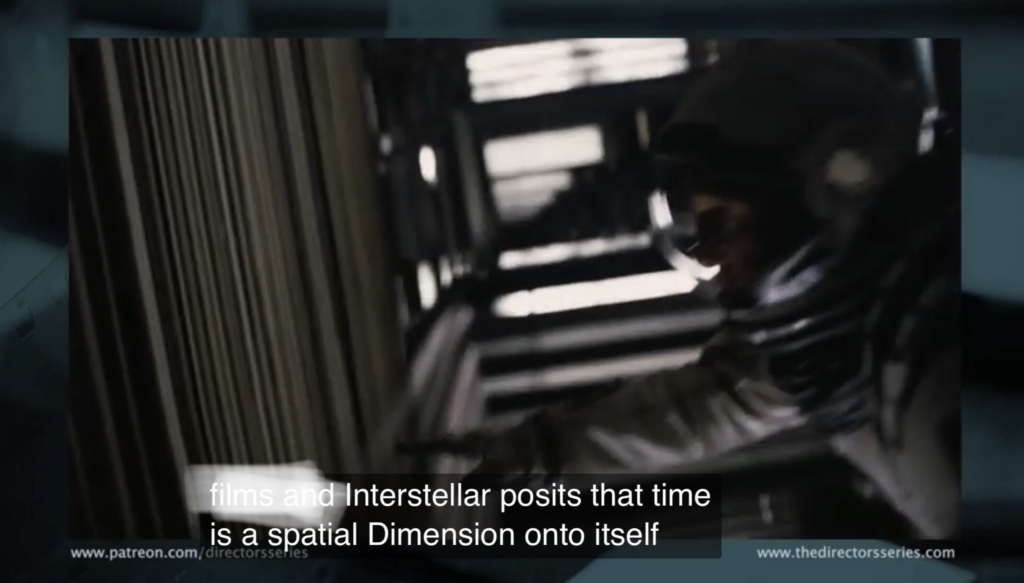
And, I wondered what if time wasn’t only a narrative or stylistic choice, but possibly an effect of synesthesia?
I was actually already theorising or asking “What if Christopher Nolan had time-space synesthesia?” even before I heard that line about Interstellar because I have this form of synesthesia myself. I have it along with grapheme-colour synesthesia (seeing letters in colour) and ordinal linguistic personification synesthesia (assigning personalities to numbers). In my case, weekdays, months, decades and centuries appear in what I’d roughly describe as different line graphs (and they’re all influenced by how I see colours and personalities in letters and numbers.)
It helps me remember birthdays or organise my life, i.e. thinking of upcoming events and putting them in the space of the month they belong to like shelving a box; or my memories of events that happened in certain months are categorised in that space that I see. Historical events also get stored or visualised in my mind through those spaces; where they appear in those “graphs”. I get to remember or associate things /people/movements more.
It’s kind of different from the general google search which mostly shows a person seeing it as a circular track around them (differentiated by coloured chunks).
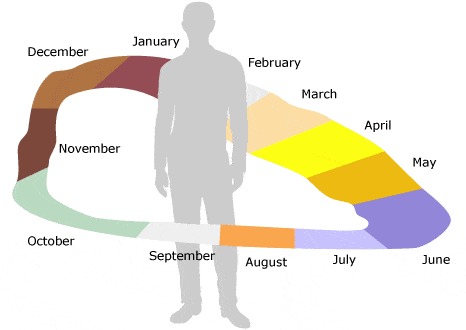
Mine looks more like this (and I was so happy when I saw it because it’s connected to Star Trek 😂):
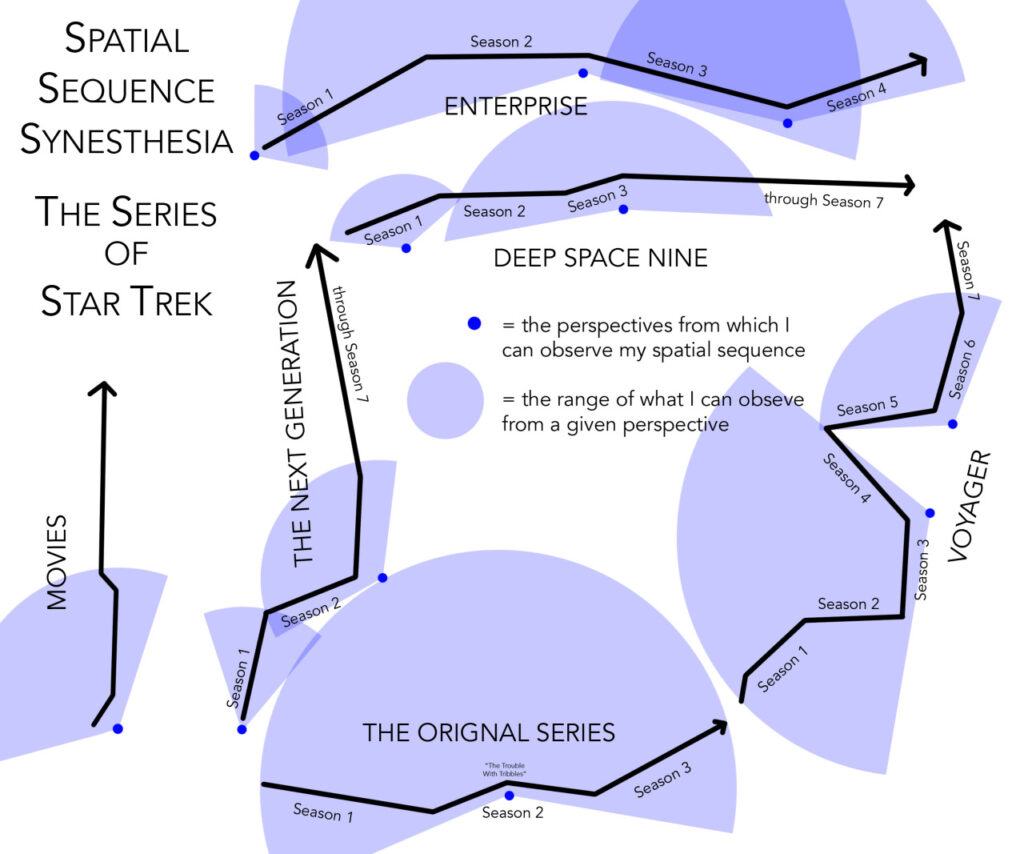
In my mind, if Nolan also has this type of synesthesia, it’s more plausible to me that he has the circular perception time because of his films 😂 Other questions and ponderings I have are:
- if he has it, I wonder if that influenced him to make time an important part of his films; to play with time, make it non-linear…
- would having time-space synesthesia help him keep track of what’s happening in the narrative?
- if the synesthesia helps him remember things more like it does for me, does that influence how memory and mementos are also a motif of his films?
- I haven’t completed my rewatch of Interstellar so I’m not sure about this, but if we examine it and find that it really shows how time is a spatial dimension, is it Nolan’s subtle expression of how he perceives the world?
The last question is a fun concept but may be a stretch, though the idea of someone making a multimillion dollar film to express synesthesia is pretty cool 😂 maybe someone will explicitly do that in the future.
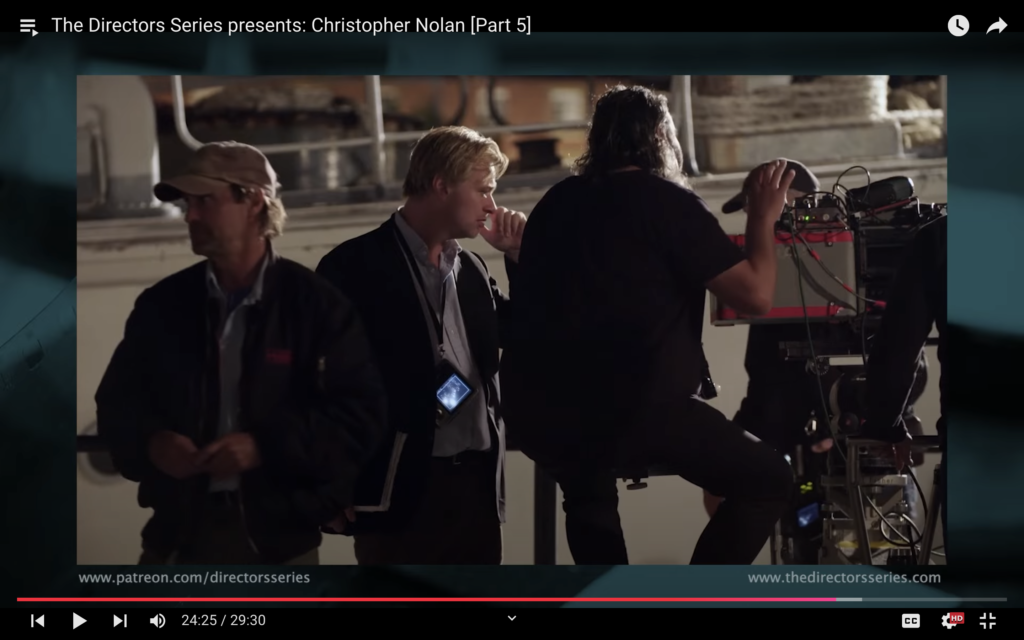
Now, I didn’t follow my typical fandom- appreciation-post format and leaned more into theory and themes, but yeah, what I’ll add is that this all reminds me of why I want to go into filmmaking in the first place. I want to be a real Christopher in the sense of the meaning of the name – Christ-bearer. I know I must balance my cause with good storytelling and filmmaking – to let the viewer do their work and not cram a message down their mouths (like my Visual Communications taught me – less is more, let them use their imagination). I think that in film I should be a poet who doesn’t say things outright but someone who makes people wonder, who puts a stone in their shoe. And I have to learn to be an engineer, like Nolan is (“emotional mathematician” as Guillermo del Toro calls him), and that’s going to take a lot of time and experience. Oh, to be an engineer with a poet’s heart, as one of my professors says.
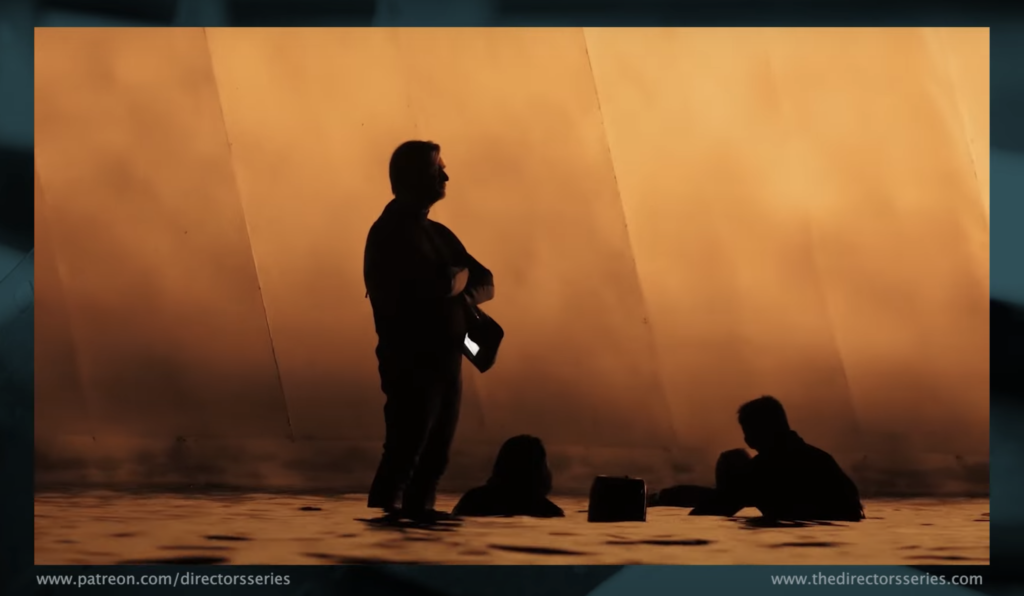
Well, to conclude, it’s funny how this director became familiar and relatable despite being a filmmaking giant and reticent British man 😂 maybe it’s just me finding meaning that isn’t really there. Or maybe there’s a hidden understanding between all English majors? 🤣 (just like my music prof said that all piano teachers are the same. bro his bachelor’s was English Lit! mine was English & Comms. I have hope in filmmaking 😭)
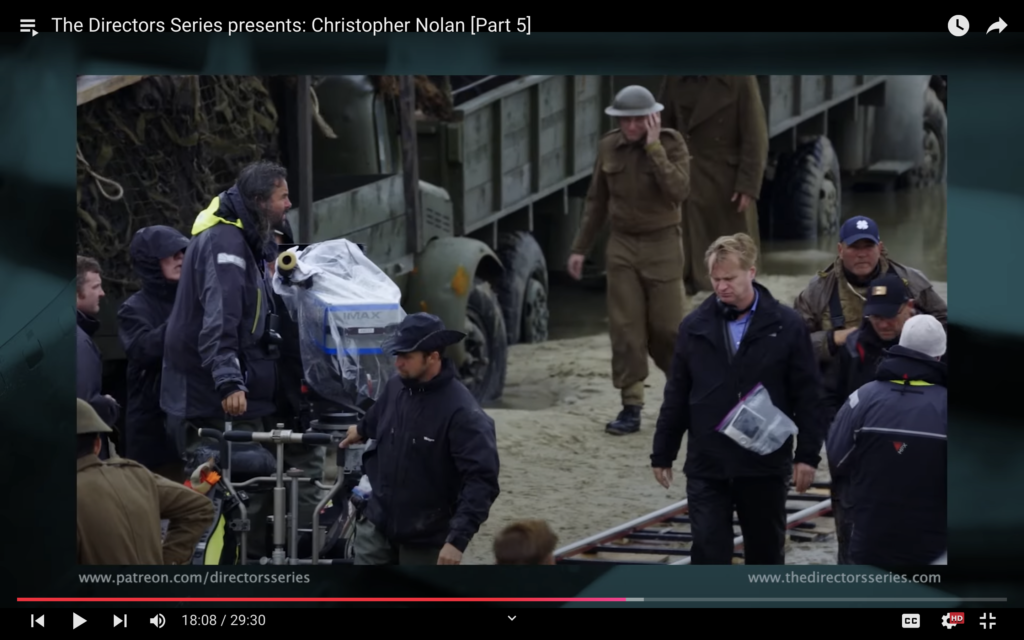
Anyways, I hope this post made you think and learn more about one of the best filmmakers of our age, because I know most of us (I was one of them) knew him just as that and only casually watched his films, but never delved deeper into the household name. And now you can probably understand that a bit more…
